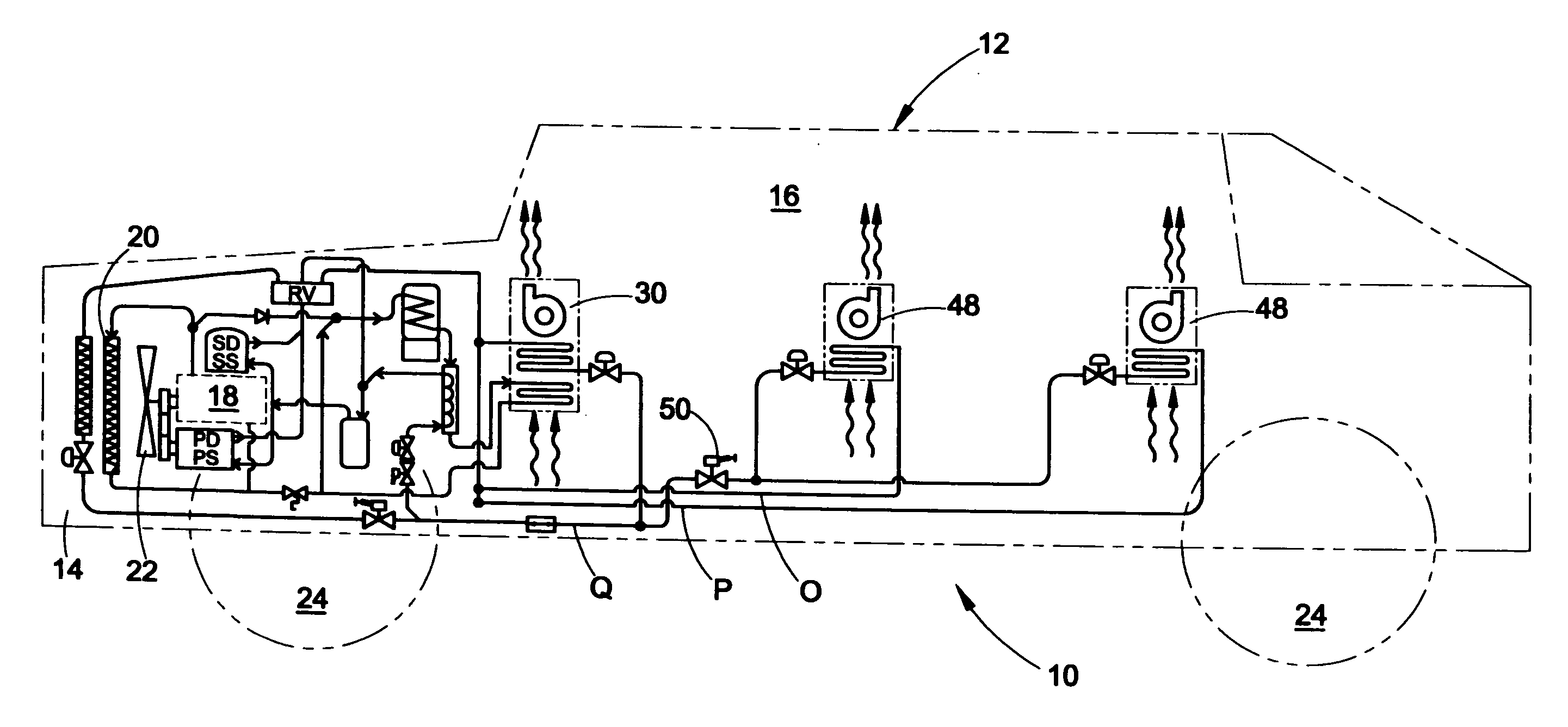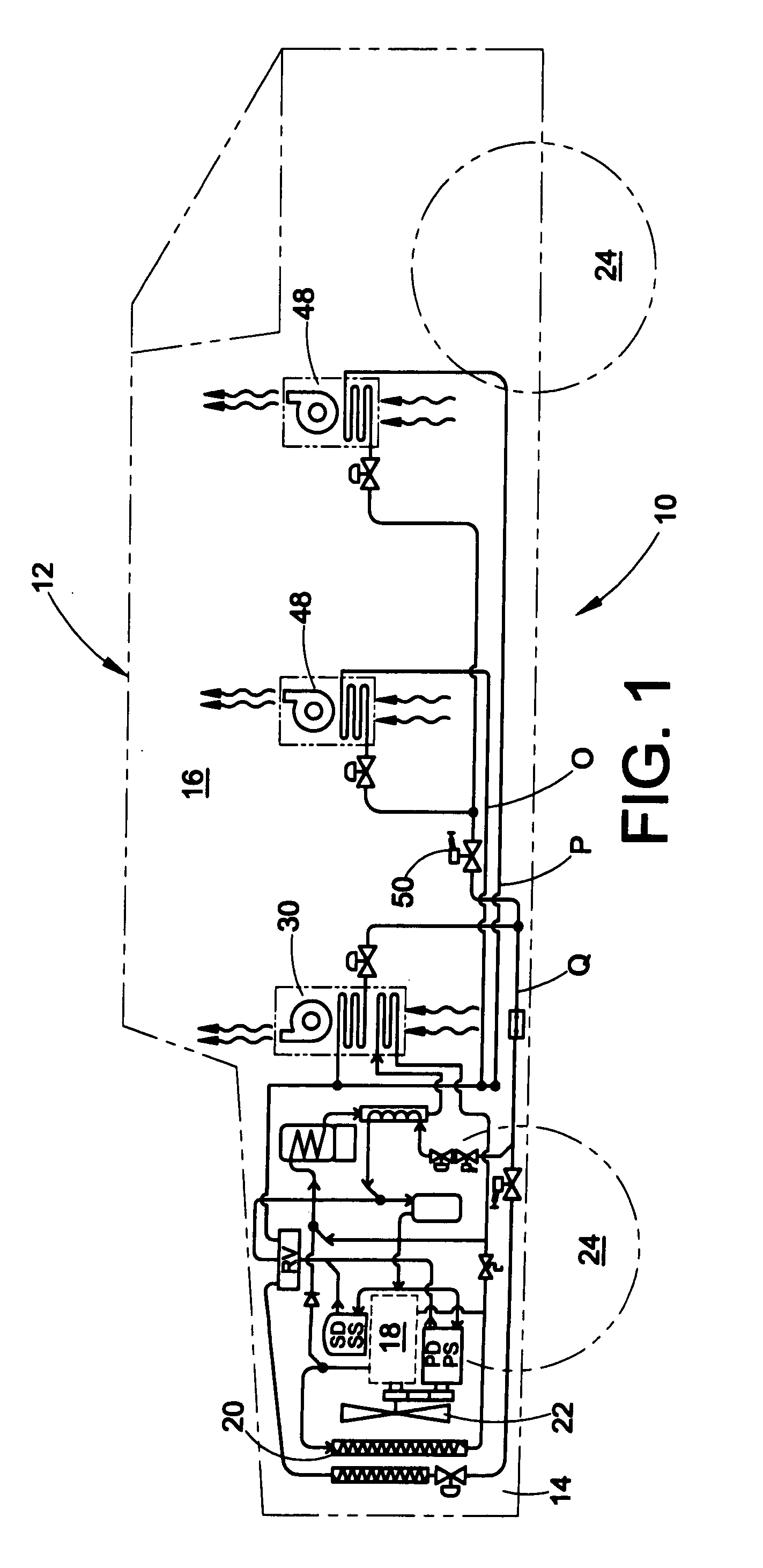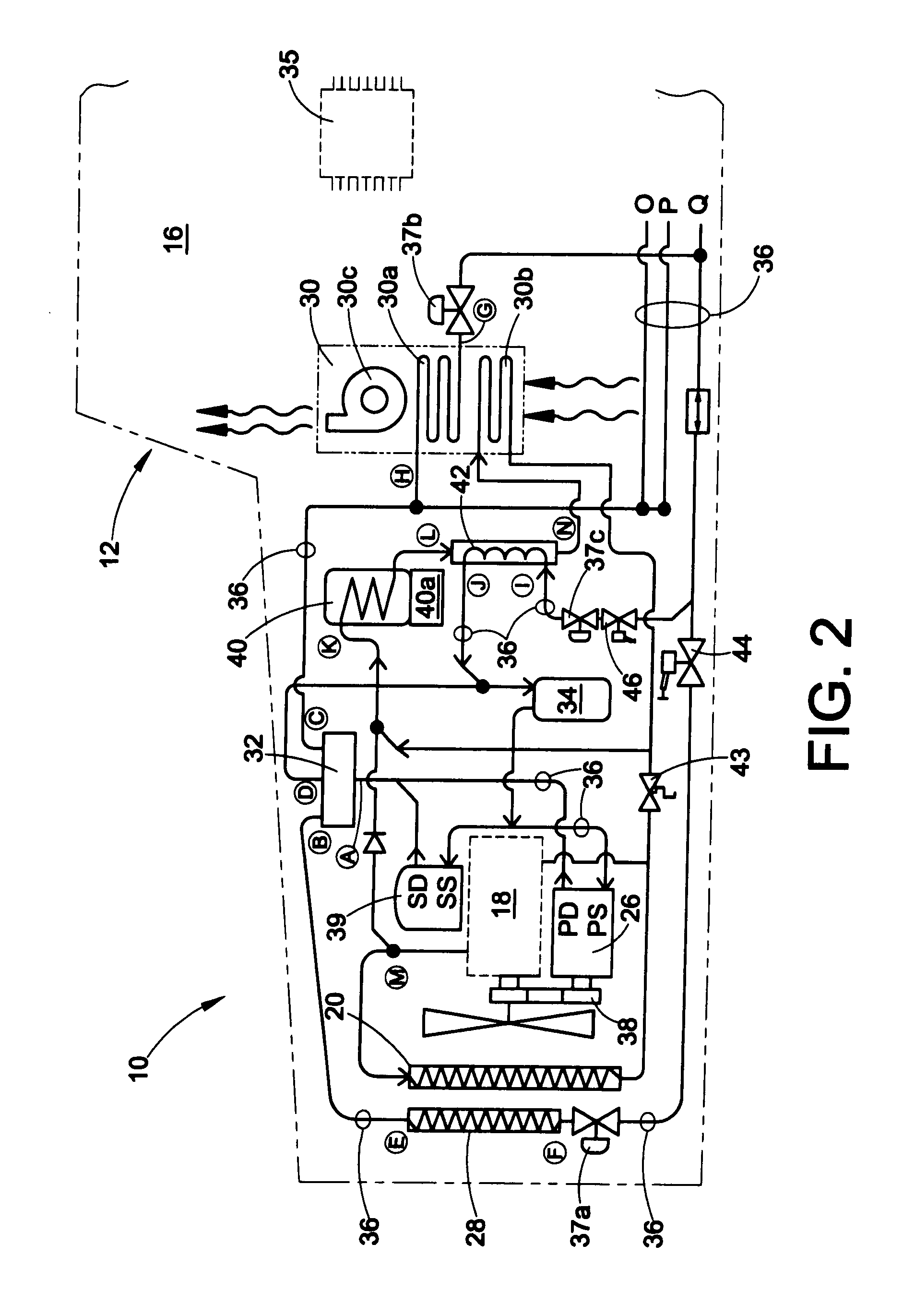Vehicle cabin heating cooling and ventilation system
a ventilation system and vehicle cabin technology, applied in the field of tactical and non-tactical vehicle cabins, can solve the problems of increased manufacturing costs of vehicles, increased vehicle weight and consumption of valuable cabin space, and engine running of vehicles
- Summary
- Abstract
- Description
- Claims
- Application Information
AI Technical Summary
Benefits of technology
Problems solved by technology
Method used
Image
Examples
Embodiment Construction
[0029]With reference to FIGS. 1 and 2, a first embodiment of a vehicle interior heating, cooling, and ventilation system (VIHCV) 10 is shown. Generally, the VIHCV system 10 is intended to be installed in a vehicle 12. The vehicle 12 may be used for the transportation of military personnel, civilians and / or cargo. In addition, the vehicle 12 may be configured as a fighting vehicle intended for tactical or combat missions. Even still, the vehicle 12 could be an electric, hybrid electric (HEV), or alternative fuel driven vehicle. Typically, the vehicle 12 includes an engine compartment 14, an interior or cabin 16, an engine or other prime mover 18, a radiator 20, a radiator fan 22 and a set of wheels 24. Also, a pressurized Nuclear, Biological, and Chemical (NBC) air filtration system 25 (FIG. 5) is supplied for collective protection providing over pressurization of the interior of the vehicle.
[0030]With reference now to FIG. 2, the VIHCV system 10 generally includes a first or primary...
PUM
 Login to View More
Login to View More Abstract
Description
Claims
Application Information
 Login to View More
Login to View More - R&D
- Intellectual Property
- Life Sciences
- Materials
- Tech Scout
- Unparalleled Data Quality
- Higher Quality Content
- 60% Fewer Hallucinations
Browse by: Latest US Patents, China's latest patents, Technical Efficacy Thesaurus, Application Domain, Technology Topic, Popular Technical Reports.
© 2025 PatSnap. All rights reserved.Legal|Privacy policy|Modern Slavery Act Transparency Statement|Sitemap|About US| Contact US: help@patsnap.com



